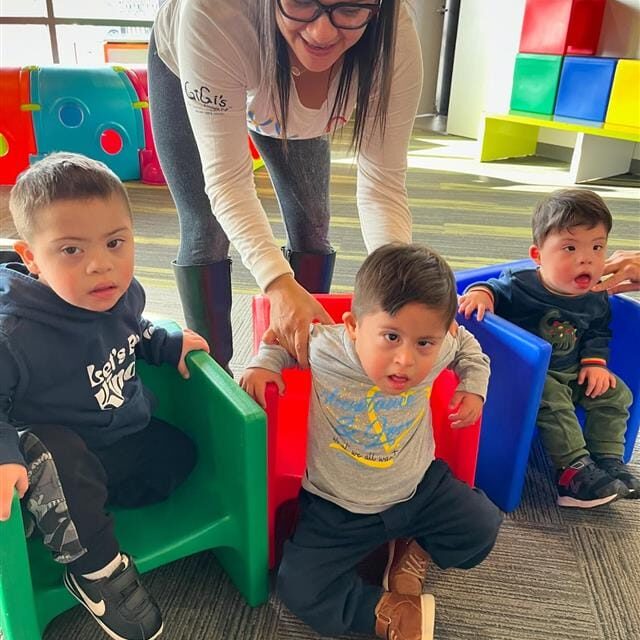Teaching Imitation WITH Snacks!
Imitation is a key learning step in a child’s way to spontaneously producing words! Sometimes, our little ones are not responsive to “say…”! Therefore, we’ve come up with a fun way to teach imitation using some yummy snacks!
How to Play and What to Say:
Pick your child’s favorite bite-sized snack. Pour them into a bowl so that you maintain full control of the snack and offer them one at a time. Small pieces allow for lots of repetition and practice, which allows for more learning opportunities! Some examples are goldfish or other kinds of crackers, puffs, small cookies, fruit snacks, diced fruits or veggies, m&m’s, or any other treat.
Select your target word. Where to start?! You can begin with all-purpose requesting words such as “give,” “more,” “want,” or “please,” but don’t forget about teaching specific words too! In this example, we’ll use the word cracker. For now, accept any approximation of the word “cracker.” Keep in mind it might not sound perfect! But we want to reward the communicative attempt. If cracker or the specific word appears too hard for a toddler, default to an easier and more general word like “eat.”
Teach a child to imitate the word using these steps:
- Excitedly show him the snack, saying something like, “Look! I have ___! Mmmm!”
- Say the word a few more times. “___. Yummy ___!”
- Ask the child, “Do you want ___? Tell me ___!”
- Expectantly wait for him to say the word. Cue him 3 to 5 times as necessary.
- As soon as he tries, give him one small piece to eat.
- When he wants another bite, repeat the entire process.
If he doesn’t try to say the word, model a word that’s easier or back up and cue a sign. When imitating words is a new skill and still hard for a child, give him the snack anyway, even if he doesn’t say the target word. We want to keep him motivated to try. Make sure you are allowing your child ample time to resond to your cues! I always count to 5 in my head before initiating more cues to allow the child to process the auditory information.
If your child is using the sign, you should reward it!! (Signs ARE a mode of communication, after all). However, we ultimately want them to pair verbal expression with the sign. Therefore, encourage sigh + word using the steps above!
Here’s how this activity looks in real life:
Hold up a cracker. Enthusiastically say, “Look! I have cracker. Want to eat? Tell me cracker.”
If a child seems unaware or uninterested, eat the cracker yourself and act like it’s the best food you’ve ever tasted! Or give him one small piece to pique his interest. Repeat your prompt again. Say something like, “Mmmm! Cracker! It’s so good! Do you want a cracker? Tell me cracker.” Look expectantly and wait a few seconds to see if he will imitate you.
If he doesn’t, say the word “cracker” a few more times, or go ahead and change your target to an easier word you think he can say. As soon as he tries, give him a small piece of the cracker. As he’s eating it, continue to say things like, “Mmmm cracker! It’s so good! Cracker!”
When he wants another piece, begin the process again. Use this method to teach other words!
References: Building Verbal Imitation in Toddlers by Laura Mize and information from Quad Cities Playhouse Therapist, Jenn Parsons
-Taylor Kent-Kowalski
Recent Posts




